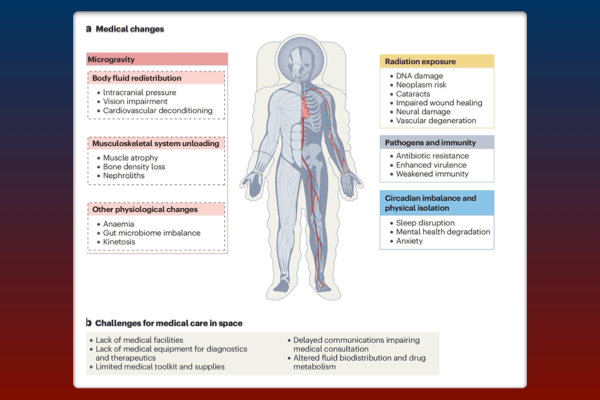.bh__table_cell { padding: 5px; background-color: #FFFFFF; }
.bh__table_cell p { color: #2D2D2D; font-family: ‘Helvetica’,Arial,sans-serif !important; overflow-wrap: break-word; }
.bh__table_header { padding: 5px; background-color:#F1F1F1; }
.bh__table_header p { color: #2A2A2A; font-family:’Trebuchet MS’,’Lucida Grande’,Tahoma,sans-serif !important; overflow-wrap: break-word; }

“Life Outside the Earth” by Angelika Lavrinenkoby
Was this email forwarded to you? Sign up here for Telemetry.
I hope you’ve enjoyed our early issues of Telemetry. To prepare for the next phase, I did a one-time update of our newsletter’s domain and this broke any prior links. This should be the last time I need to update it. Excited for what’s next!
Great to see some of you at Robotics Invest. Looking forward to meeting more of you at Reindustrialize.
Your personal feedback is warmly welcome. No one builds alone.
– Jonathan “JMill” Miller

MONITOR

Based on illustration by Corrine Ying Xuan Chua et al
Dual-domain medical materials for Space and Earth
The development of advanced material technologies to address the medical risks of spaceflight, such as cosmic radiation and microgravity, has been in the works since the early days of the Space Race. However, with missions such as Artemis and the cost-reduction enabled by SpaceX’s launch platforms, there’s a growing imperative to make Space even more habitable. Innovations include “living pharmacies”, drug delivery, regenerative medicine, and bioprinting for better healthcare. These technologies aim to ensure astronauts’ safety and well-being during missions. These are all areas of interest for advancing health care for us Earthlings and our space-faring brethren. (🚩Nature)
Congratulations on the publication, Miguel, Gio, and Bob!

via Paul Scharre (Four Battlegrounds: Power in the Age of Artificial Intelligence)
The dangers of humanizing machines and dehumanizing each other via machines
“The tendency to anthropomorphize AI systems can lead to unrealistic expectations about their capabilities and reliability,” writes James Johnson in his commentary at War on the Rocks. It’s a perspective I share and imbue in participants in the courses I facilitate in robotics and machine intelligence. When we apply human-like traits to AI systems, this tendency can negatively affect trust, performance, and ethical considerations in human-machine teams. At other times, it enhances interaction and effectiveness. As an example, we can tamp-down anthropomorphism by avoiding labeling a robot by gender designation such as “he’“ or “she” – just refer to it as “it”. In burgeoning military applications, we need to exhibit careful design, training, and ethical guidelines to balance AI’s benefits and challenges while ensuring meaningful human control and preventing dehumanization in warfare. Johnson’s commentary links to a variety of resources on these topics.
My colleague David Mindell’s book “Our Robots, Ourselves” is a great read for cultivating an intuitive understanding of how robots and humans reflect each other and where they diverge.

Composite image based on bill SB-1047
Advocating for AI development amid regulatory concerns
Regulate applications, not technologies, writes Andrew Ng in a piece critical of California’s proposed law SB-1047, which imposes stringent safety assessments and liability for AI models, potentially stifling innovation. The bill’s “hazardous capability” designation could hinder model development, especially for open-source projects. Ng emphasizes the need to support innovation while ensuring safety and calls for opposition to the bill to prevent its negative impact on research and development.
BLIPS
A wooden satellite is about to head to space. See yours truly give an impromptu response to 🎥 “What is tough tech?”. Could a huge organization-of-organizations such as the U.S. Department of Defense improve its “innovation” by adopting a framework of capability, concept, and process?
PROGRAM
Have a concept for improving healthcare problems in space and on Earth? The Humans in Space Challenge by Boryung is accepting applications.
Application Deadline: June 27
Apply Now: HumansInSpaceOfficial.com
The 3rd annual Humans In Space Challenge is a global competition for startups and researchers addressing critical healthcare problems in Space and on Earth. There is a support system for developing and commercializing pivotal space healthcare solutions.
Challenge Topics:
1. Critical Problems in Space: Addressing healthcare challenges to extend human presence in space.
2. Critical Problems on Earth: Leveraging space environments to solve health problems on Earth.
I stored a copy of the program flyer for your reference.
Followup with humansinspace@boryung.com if you have questions.
No One Builds Alone.
/N1BA

The 3D modeling of a Sea turtle by @planet_earthstar
ASK↔OFFER
Got an ‘ask’ of our readership for help, contacts, services, or a second set of eyes to look at your slide deck? Having something to offer, such as skillz, cash, or good vibes? Let’s hear it.
Respond to this email, tell me – it would be cool to relay your Ask↔Offer in our next newsletter.
Telemetry is written by JMill of The End Effector.
Home | Partner | Membership
Questions, feedback? Let me know by replying to this email.




